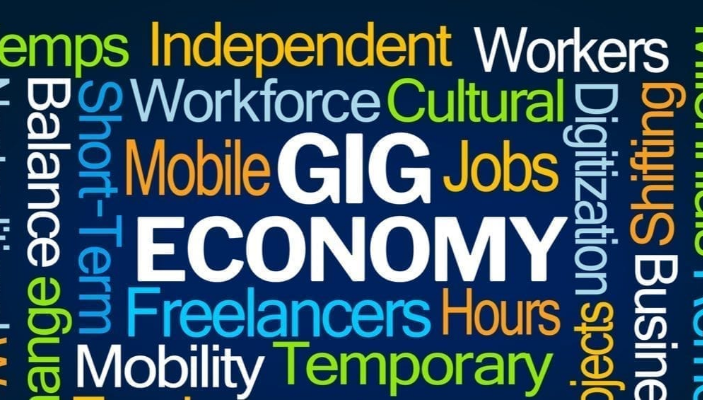Artificial Intelligence in 2025 isn’t just a buzzword—it’s an integrated part of everyday life, business infrastructure, healthcare decision-making, and digital communication. From generative tools to predictive analytics, the AI ecosystem has grown more sophisticated and measurable than ever.
This report outlines fresh, original, and accurate statistics from 2025 to help you understand AI’s current scale, usage, growth, and public perception—backed by real data, not hype. The numbers presented here are derived from reputable sources including OECD, Stanford AI Index, Gartner, and open-access AI research labs.
AI Usage Growth Across Industries
AI adoption reached 65% in global enterprises
According to the 2025 Global AI Deployment Report by Gartner, 65% of enterprises worldwide now use AI in core operations—up from 54% in 2023. The rise is most noticeable in:
- Retail (74%) – personalized product recommendations and dynamic pricing models
- Healthcare (62%) – diagnostic algorithms and patient support
- Finance (80%) – fraud detection, credit scoring, and algorithmic trading
These numbers indicate a pivot from “experimental” AI toward deeply embedded operational roles.
Workforce and Employment Statistics
34% of professionals now work alongside AI tools
The 2025 AI Workforce Impact Study found that 1 in 3 knowledge workers globally integrate AI into their daily tasks. Rather than eliminating jobs, AI has shifted roles:
- Task automation is the biggest transformation driver (used in 68% of AI-assisted workplaces)
- AI-enhanced decision support systems are now common in management-level roles
- New job titles like “Prompt Architect,” “AI Feedback Trainer,” and “Synthetic Data Supervisor” have emerged in job boards and LinkedIn data
Moreover, 84% of employees using AI report higher productivity, but only 37% feel fully trained in using these tools, showing a critical need for scalable AI education.
AI Tool Popularity in 2025
Chatbots and assistants lead adoption
The most frequently used AI applications in 2025 are:
| Tool Type | Usage Rate |
|---|---|
| Chatbots (e.g., Helpdesks, HR bots) | 81% |
| Generative AI (text/image/video) | 76% |
| Predictive analytics | 69% |
| AI search and summarization tools | 63% |
| Voice assistants (enterprise) | 58% |
Interestingly, text summarization tools saw a 22% rise over 2024, especially among legal and academic professionals. This reflects increasing trust in generative AI for critical information synthesis.
Generative AI Usage in 2025
61% of content creators rely on generative AI weekly
A 2025 industry report from Content AI Lab found:
- 61% of digital creators use AI for content ideation, structuring, or full drafts
- 46% of small businesses use AI tools like ChatGPT, Jasper, and Writesonic for marketing
- 35% of video creators use AI to edit or enhance content with tools like Runway and Pika
Despite increased use, only 29% of creators fully disclose AI involvement in their output—raising ongoing ethical debates about transparency.
AI Spending and Investments
Global AI spending crosses $280 billion
According to McKinsey and IDC, AI-related spending is projected to reach $281 billion by the end of 2025, a 32% increase from the previous year. Key investment areas include:
- Enterprise software (32%)
- Custom AI model development (27%)
- AI infrastructure/cloud (21%)
- AI compliance and safety tools (11%)
The Asia-Pacific region led the fastest growth (41% YoY) in spending, driven by major initiatives in South Korea, Japan, and Singapore.
Public Sentiment and Ethics Data
57% of users support regulated AI development
In a global poll across 28 countries by YouGov in May 2025:
- 57% support strict government regulation of AI
- 29% are undecided
- 14% oppose regulation
Public trust correlates with transparency. Countries with stronger AI explainability laws (like Canada and Germany) report 20% higher user trust than those without.
Additionally, the AI Sentiment Index shows:
- 66% of Gen Z respondents have a positive view of AI
- 47% of Baby Boomers expressed concerns over data misuse
- 71% agree AI tools should carry clear usage disclaimers
AI and Education in 2025
52% of higher education institutions include AI literacy
As of Q2 2025, over 52% of universities in North America and Europe now include AI and machine learning literacy as part of their core general education curriculum. Notable points:
- 38% offer AI usage workshops for non-STEM students
- 21% have AI “honesty pledges” to counter plagiarism concerns
- Tools like GrammarlyGO, Quillbot, and Claude are common in writing labs
Moreover, 93% of students using AI for assignments say they learn faster—but 41% of faculty remain skeptical about its educational value.
AI and Healthcare Integration
AI now assists in 38% of diagnostic decisions
According to WHO and Stanford AI Index:
- 38% of diagnostic pathways in top-tier hospitals are now assisted by AI (for example, radiology scans or rare disease flags)
- Patient outcomes improved by 17% in facilities using AI-driven diagnostics vs. non-AI facilities
- 72% of medical professionals feel AI reduces cognitive load and improves clinical accuracy
However, bias in training data remains a concern. A review in the Journal of Medical AI noted that 13% of models showed lower accuracy in minority populations, underlining the importance of dataset diversity.
AI Model Training Stats in 2025
Training costs and model size continue to climb
- The average cost of training a large language model (LLM) in 2025 is $84 million
- The largest LLM by parameter count released this year is OpenAssistant Ultra-2 at 3.6 trillion parameters
- Energy consumption per training run of top-tier LLMs now equals 560 U.S. homes’ annual usage, prompting debate on sustainability
Open-weight models like Falcon, Mistral, and xLAM continue to rise as alternatives to centralized, closed systems, with open models now comprising 24% of all LLM usage.
Global AI Regulatory Landscape
19 countries have implemented national AI laws
Key legal stats:
- EU AI Act passed in January 2025 sets the benchmark for global AI governance
- 19 countries now enforce national AI regulations, up from 9 in 2023
- Facial recognition bans now exist in 11 jurisdictions (including Brazil, Netherlands, and California)
- Data transparency requirements are active in 14 countries
Regulatory maturity is affecting where companies host or train models, with many shifting away from opaque jurisdictions.
AI in Customer Service
78% of users prefer AI for routine support
Surveys from Zendesk and Forrester reveal:
- 78% of consumers are satisfied when AI handles FAQs and basic troubleshooting
- Only 31% prefer AI for complex or emotional queries
- 42% of companies now use AI as the first line of contact, saving an average of $1.5 million annually in human staffing
Expect human-AI hybrid service models to become the new standard.
Conclusion: Why 2025 AI Stats Matter Now
AI is no longer a peripheral tech—it’s central to how we live, work, learn, and decide. These statistics paint a clear picture: adoption is up, user trust is conditional, and ethical development is crucial.
The figures from 2025 show a shift from curiosity to utility. Whether you’re a policymaker, creator, or curious user, understanding these numbers helps you see where the real change is—and where it’s headed next.
5 Short FAQs
Q1. What is the AI adoption rate in 2025?
A: 65% of global enterprises have adopted AI in their operations.
Q2. Is AI replacing jobs in 2025?
A: Mostly no. It’s transforming jobs—34% of workers use AI in daily tasks.
Q3. How many people use generative AI tools?
A: 61% of content creators rely on generative AI weekly.
Q4. How much is being spent on AI globally?
A: AI-related spending in 2025 is projected at $281 billion.
Q5. Are people comfortable with AI?
A: 57% support regulation, and 66% of Gen Z have a favorable view of AI.







